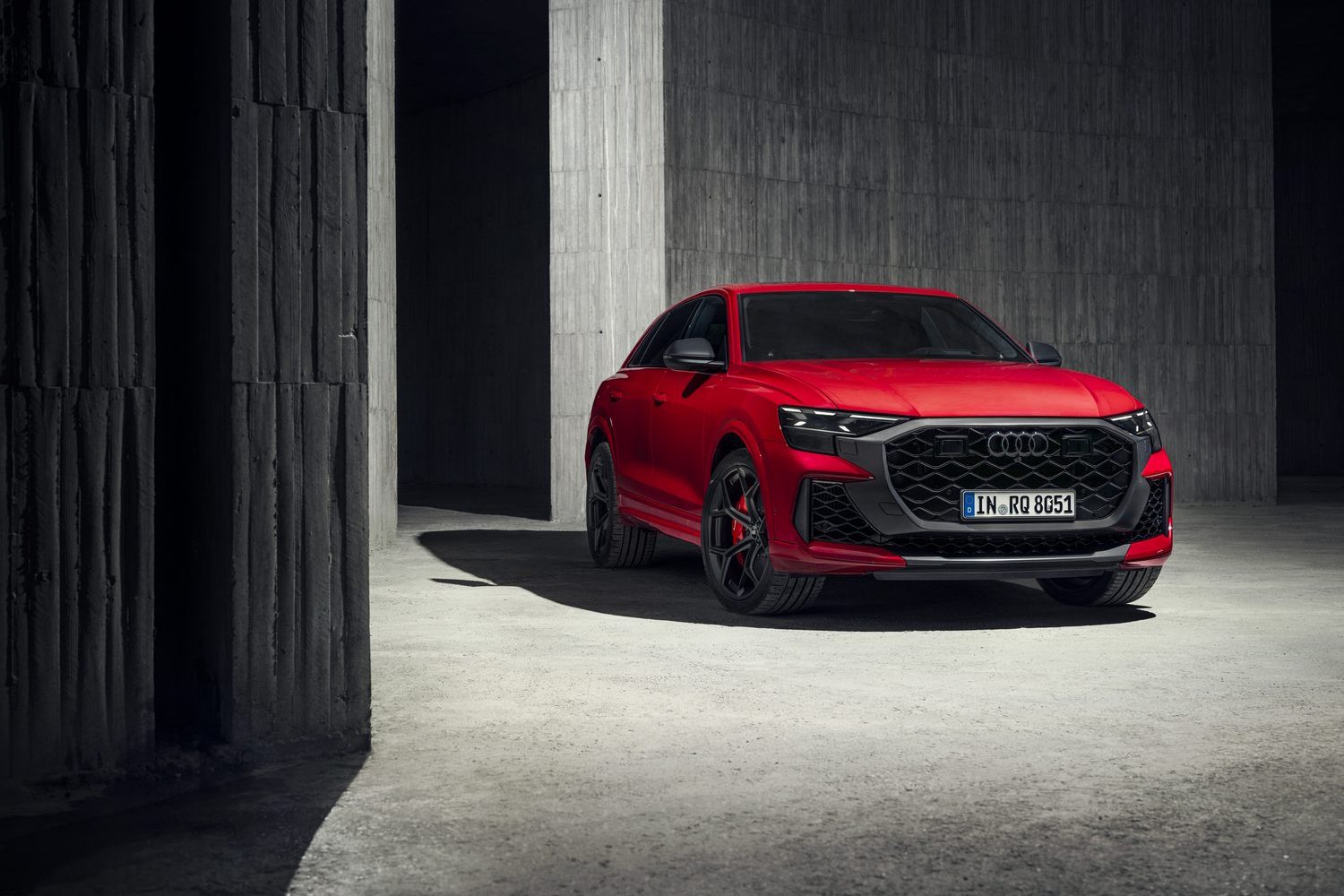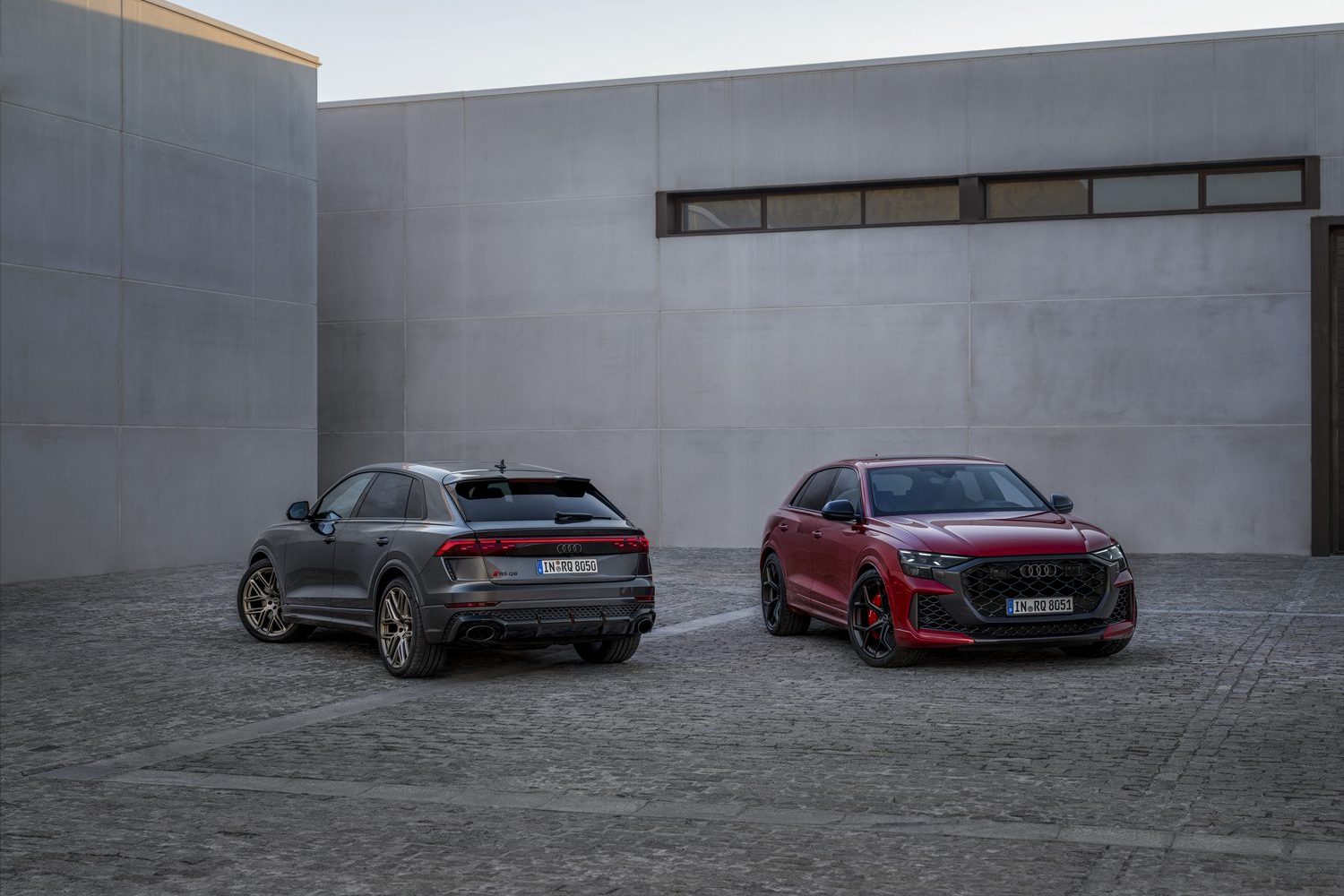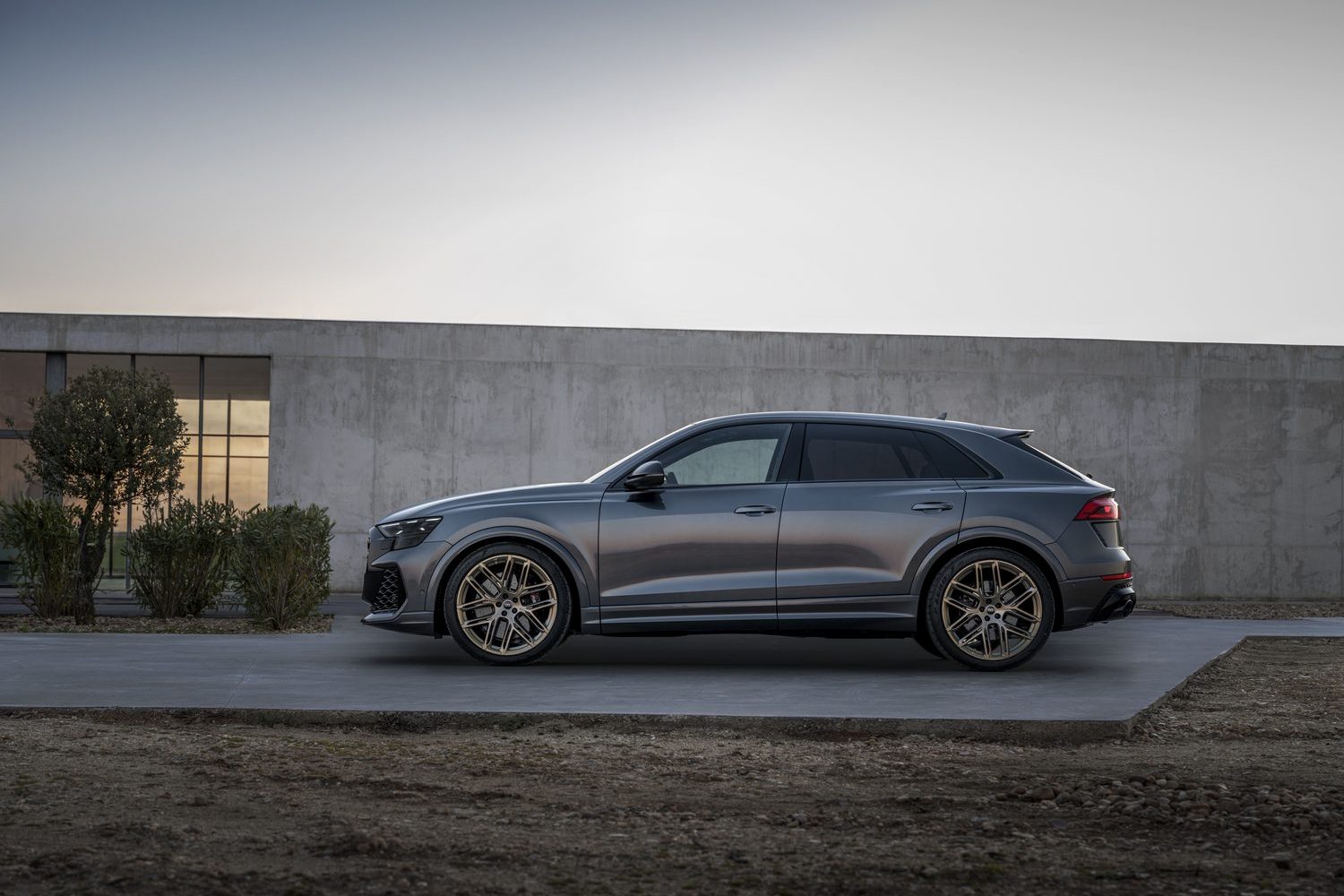Audi might have rebadged the all-electric e-tron SUV as the Q8 e-tron, but the rest of the combustion-engined Q8 lineup lives on, and it lives ever more powerfully now that Audi has updated the RS Q8 with yet more grunt from its twin-turbocharged V8 petrol engine.
How much power are we talking about here?
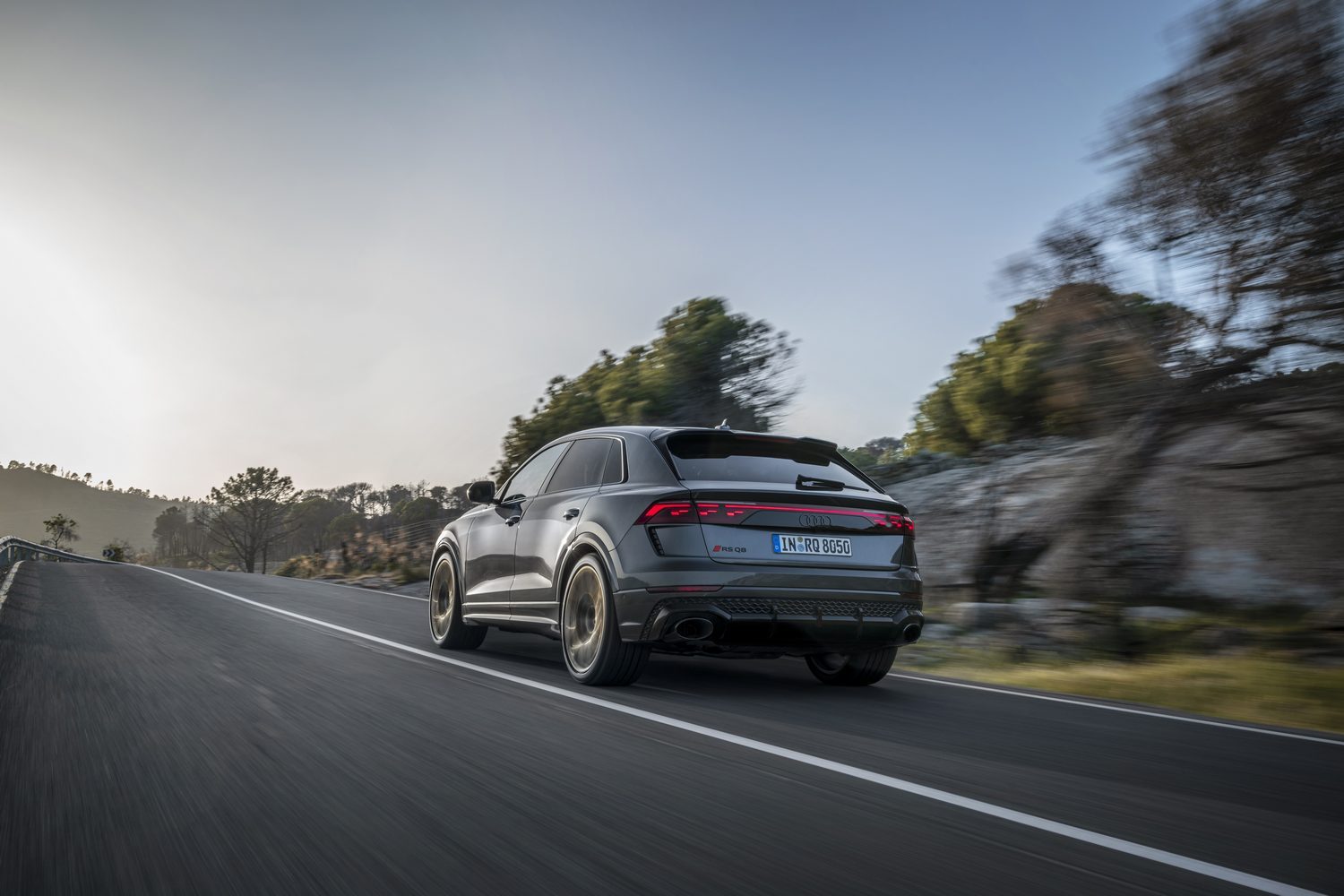
Quite a lot, as it happens. Though the standard car is pegged at 600hp and 800Nm of torque, Audi has introduced a new ‘performance’ variant producing up to 640hp, with a helpful 850Nm of torque, which makes this the most powerful combustion-engined Audi ever (albeit some way short of the just-announced 925hp upgrade for the all-electric e-tron GT). That’s enough to get this big SUV to 100km/h from rest in just 3.8 seconds, and while the top speed is normally limited to 250km/h, there is the option of removing that limiter, at which point this is a big, roomy, posh family SUV that can hit 305km/h, if you happen to have an Autobahn nearby. Some of the power bump has come from a new, lighter exhaust system which reduces back-pressure in the system as well as giving the RS Q8 a sonorous sound. Want more? There’s an optional sports exhaust which goes one louder.
With that much power, I hope it handles well...
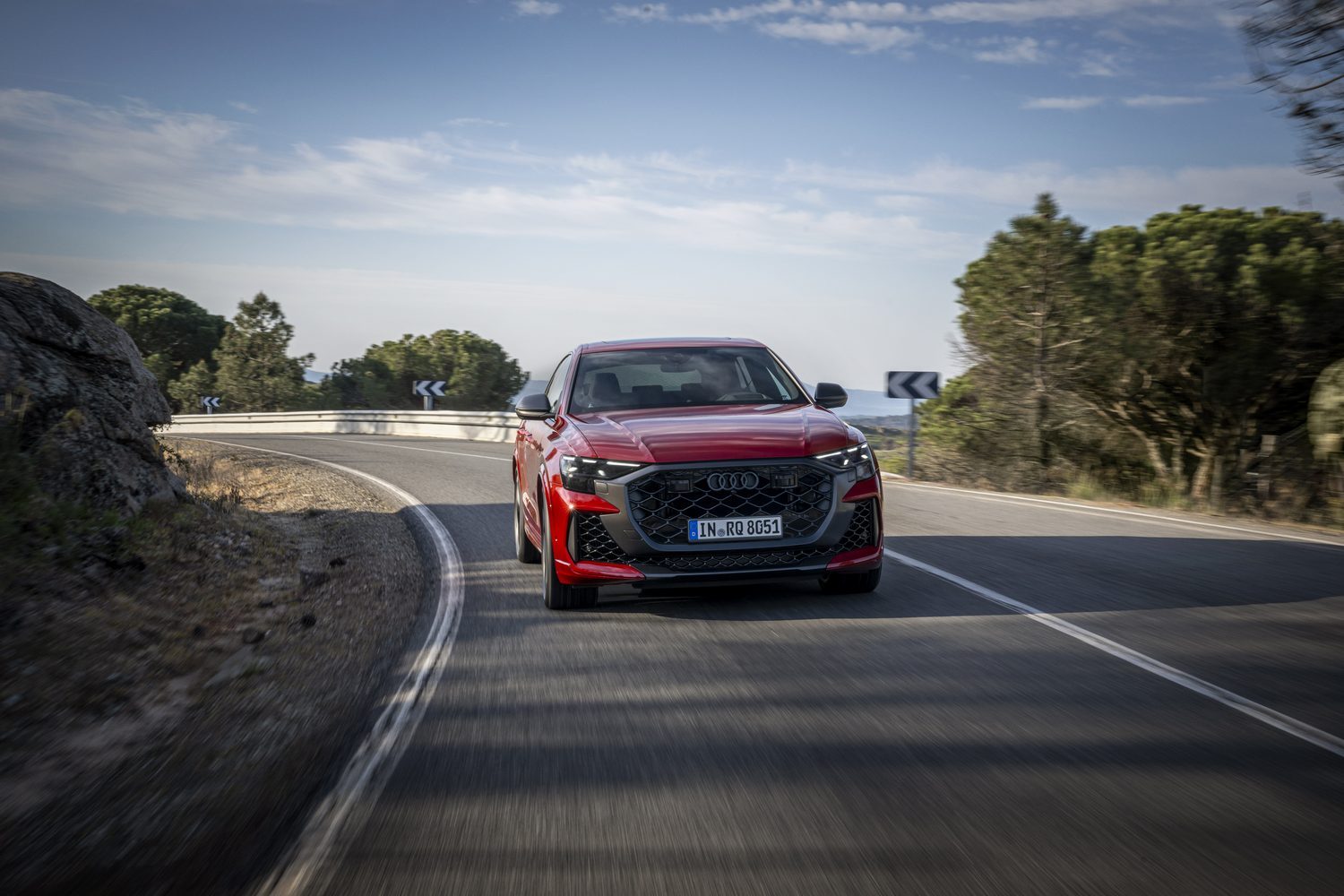
It ought to. As well as the power upgrade, Audi has been tinkering with the RS Q8’s chassis. Available optionally, there’s a Dynamic Package that includes electromechanical active anti-roll stabilisation, a quattro sport differential and RS ceramic braking system (the performance model gets the ceramic brakes as standard). The anti-roll system uses a 48V lithium-ion battery for power and this is claimed to absorb and release high currents in a very short time, supplying two electric motors with a maximum power of 1.5 kilowatts each. Air suspension with a 90mm variable ride height is standard on both models. There’s a standard differential that sits in the centre of both models, and normally distributes engine power in a ratio of 60 per cent to the rear, and 40 per cent to the front. However, when needed, it can send up to 70 per cent of the power to the front wheels, and up to 85 per cent to the rears (not at the same time, obviously). Meanwhile the eight-speed automatic gearbox gets faster shift times and there’s four-wheel steering too.
Does it look mean?
It certainly does. The ‘singleframe’ grille (as Audi calls it) gets a new honeycomb mesh, and for performance models there’s a matte grey finish to distinguish it from the regular RS Q8. Around the back you’ll find oval exhaust pipes and a massive diffuser into which is set - F1 style - a small extra reflector. There are some new paint options, including metallic finishes in Sakhir Gold, Ascari Blue and Chili Red. There are also new Matrix LED and optional HD Matrix LED lights, and you can configure the layout and patterns of these via the big MMI screen in the cabin. Likewise, you can alter the patterns and light signatures of the rear OLED lights. As standard, both versions of the RS Q8 come with 22-inch ten-spoke alloys, shod with 295/40 tyres. However, as an option you can have 23-inch wheels with a Y-shaped six-spoke design and 295/35 tyres, and the bigger wheels can be finished in metallic black, matte ‘Neodymium Gold,’ burnished silk matte grey, or burnished metallic black. There’s more on the wheel front, as lighter 23-inch wheels are available, which are manufactured using a high-tech forging and milling process. Inspired by motorsports, the Y-shaped five-spoke design ensures optimal brake cooling, according to Audi. They also reduce the unsprung mass by around five kilograms each compared to the standard 22-inch wheels making for a total weight reduction of around 20kg. They are available in burnished metallic black, matte grey, or matte black. You can also choose to have high-performance Pirelli P Zero 295/35 R23 tyres, which are claimed to offer consistently better grip on wet and dry roads.
So it looks good and it goes. What about stopping?
Behind those wheels you’ll find the standard RS brakes measuring 420mm at the front and 370mm at the rear. The front brakes get ten-piston calipers, painted black, but you can optionally have them in red with the RS logo. Or you can go the whole hog and get the ceramic braking system. These come as standard on the RS Q8 performance and are optional on the RS Q8 and use discs that measure 440mm (front) and 370mm (rear). The calipers come in grey as standard in the RS Q8 performance but are optionally available in red or blue.
What’s the interior like?
Buyers can choose from red or grey RS design packages for the RS Q8’s cabin, while the RS Q8 performance can be had with a blue design package, including ‘Ocean Blue’ seatbelts. There’s contrast stitching for the upholstery and an Alcantara steering wheel rim, too. The gear selector and the side of the centre console are covered in ‘Dinamica’ microfibre, which is made from recycled PET fibres - this can optionally be added to the door panels and armrests along with perforated seats through which you can see a centre colour panel if you select the ‘RS design pack plus’. That also comes with colour-coded RS logos stitched into the seats. The standard perforated sports seats with honeycomb stitching also feature contrasting stitching in the chosen package colour. Decorative inlays for both models are available in matte brushed aluminium with linear embossing in silver, aluminium Race Anthracite, matte Carbon Twill, or Grey Oak. As a further option, diagonal brushed black aluminium is available for the RS Q8 performance On the outside, if you’ve picked the RS Q8 performance, you get a special puddle light projector which shines the words ‘RS performance’ onto the ground. Meanwhile, in the digital instrument panel, the RS performance also gets a shift light indicator when you’re using the eight-speed Tiptronic gearbox in manual mode. It changes the RPM display from green to yellow to red, flashing just like an F1 car’s, to remind you to shift up.
How much is an RS Q8 going to set me back?
We’re not sure yet as Irish prices haven’t been set, but in Germany the RS Q8 costs €141,900 while the performance model clocks in at €155,700. Add Irish VRT to those and you’re probably looking at not much change from €190,000 for the entry-level model.
